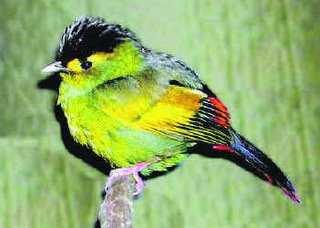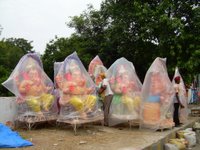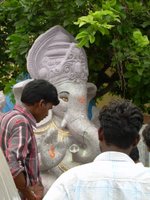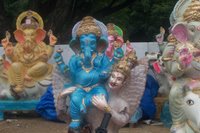
The bird has been named after the Bugun tribe in whose land it was found. Says Mr Aasheesh Pittie, Hyderabad-based birdwatcher, The discovery of a new bird is really special, but when it’s a stunning species with no geographically close relatives and in a part of the world where bird collectors have sampled birds for more than a century, it’s nothing short of a miracle.
In a world where the front page is full of mishaps, such news, tucked away on the last, is really exhilerating. There is much to crib about, but one must rejoice in small happinesses.
Remembering an old friend. Talking about a new bird species, I remember fondly, an old friend, who has sadly, found its way into the endangered species list, all over the world. The good old sparrow.

On a trip to Nagarjuna Sagar recently, apart from the abundant water in River Krishna, I enjoyed looking at the several insects and birds that frequented the vast openness of Punnami, the guest house we stayed in. The canteen overlooked Krishna, with a glass separating the inside from the outside. The quiet was unbelievable after our daily dose of Himayatnagar’s increasing decible levels.
Suddenly, a house sparrow came hopping near the glass next to our table. It pecked at grains on the floor, hopped around on the back of the chair outside. A familiar sight, one would say. But, no longer, in the part of the world I live in, and in many others. The humble house sparrow, which had been a taken-for-granted part of my childhood, has been one of the casualties of changing lifestyles. They are gone! My children don’t know what they look like. The chirping of sparrows in the background of everyday life was so natural that one hardly noticed it. It has now been replaced by a doorbell simulation (which I hate, and which I judge people by...sorry!)...you press the switch and it goes, cheep, chip, chip chip, chip...!!
Subject of many a pittamma-kakkamma (sparrow-crow) story, pittamma was always the good bird, and the poor old kakamma always played the villian, much like Rajesh Khanna and Prem Chopra in the movies of the seventies! But unlike in the movies, looks like our little hero has been knocked out by the villain...that spoon-stealing, chapati-filching rascal—the crow—who’s still around. More on him another time, for he’s an intelligent and interesting character, and deserves a blog posting all to himself!
For now, I’ll say adieu, little sparrow...we miss having you around.
________________________________________
Links: Where have all the sparrows gone? by Vasudha, V., http://www.indiatogether.org/2005/aug/env-sparrow.htm)
Excitement for Ornithologists by K. Venkateshwarlu, http://www.hindu.com/2006/09/12/stories/2006091202072200.htm
Reference: Wondrous babbler, Editorial, The Hindu 13 October 2006.




 Here is a touching tribute to Steve Irwin, sent to me by Giridhar.
Here is a touching tribute to Steve Irwin, sent to me by Giridhar.









